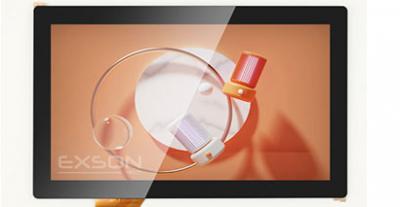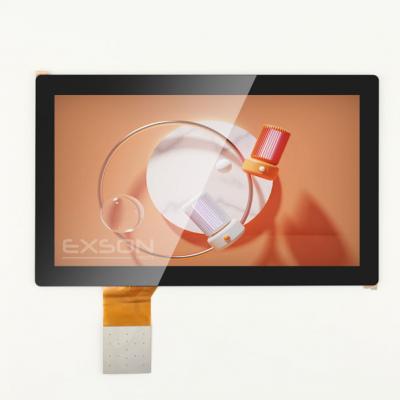EDP interface and LVDS interface are widely used in various industrial LCD screens. EDP and LVDS are both video signal interfaces used in industrial computers to connect touch screens or LCD screens. So which one is better, EDP or LVDS? What are the differences? Let's do a simple comparison analysis below.
The EDP interface is a fully digital interface based on the DisplayPort architecture and protocol, and its full name is Embedded DisplayPort.
It is generally used as a communication interface for notebooks, tablets, and computer displays. The computer using EDP display interface has higher resolution than the one using LVDS interface. High-definition screens usually use EDP communication interface, which can achieve wide viewing angles.
The screen interface of the EDP screen line is a 0.3-0.5 small-pitch soldering flat cable. The EDP channel can be divided into single-channel and dual-channel. The EDP screen line generally consists of 2 groups, 3 groups, 5 groups, and 8 groups of twisted pairs. The common EDP screen line has 2 groups and 3 groups of signal twisted pairs.
The LVDS interface is a low swing differential signal technology, and its full name is Low Voltage Differential Signaling. It is a digital video signal transmission method developed to overcome the disadvantages of high power consumption and strong EMI electromagnetic interference when transmitting high-speed broadband data in TTL voltage mode.
LVDS allows signals to be transmitted at speeds of several hundred Mbps on differential PCB lines or balanced cables. It uses low swing and low current drive outputs to achieve low noise and low power consumption. LVDS screen lines are divided into standard definition lines and high definition lines. The LVDS high-definition line has a 0.5 spacing dual row, namely JAE FIRE51P high definition line. The LVDS standard definition line has a 1.0 spacing and 1.25 spacing, and the terminal is assembled by rivet pressure. LVDS interface for industrial LCD screens is widely used in industrial control integrated machines.
The biggest feature of the LVDS interface is its low voltage and low current drive mode, which achieves low noise and low power consumption. The characteristic of the EDP interface is its use of micro-packaging structure, which can simultaneously transmit multiple data, has a simple circuit, and minimal electromagnetic interference. Therefore, the transmission rate of the EDP interface is much higher than that of the LVDS interface, and high-definition screens usually use EDP communication interface to achieve wide viewing angles.
Let's take a LCD display with the same resolution as an example. If the LVDS interface is used, more than 20 pairs of data transmission lines are required, but if the EDP interface is used, only 4 to 6 pairs of lines are needed. Therefore, the advantage of EDP is more obvious in the high-resolution high-definition screen field.
Currently, EDP interfaces are widely used in industrial control LCD screens to improve the data transmission speed between the display panel and the processor. EDP interfaces have become mainstream in the high-definition and wide-viewing-angle screen fields.
Of course, LVDS is also widely used in the field of industrial LCD screens due to its low power consumption characteristics, meeting the needs of different users.
 Exson Tech LCD 128x160: Compact and High-Definition, the New Trend in Future DisplaysJuly 1, 2024In the wave of the digital age, the display screen, as the core component of human-computer interaction, directly affects the user experience with its performance and quality. Among numerous display b...view
Exson Tech LCD 128x160: Compact and High-Definition, the New Trend in Future DisplaysJuly 1, 2024In the wave of the digital age, the display screen, as the core component of human-computer interaction, directly affects the user experience with its performance and quality. Among numerous display b...view Industrial LCD Screen PK Ordinary LCD ScreenDecember 9, 2022At present, the power consumption of liquid crystal displays is already very low, so they are loved by people in many applications, and are widely used in many sophisticated and long-lasting electroni...view
Industrial LCD Screen PK Ordinary LCD ScreenDecember 9, 2022At present, the power consumption of liquid crystal displays is already very low, so they are loved by people in many applications, and are widely used in many sophisticated and long-lasting electroni...view Innovations in Industrial TFT Display Technology: High Brightness, High Resolution, and BeyondMay 9, 2024With the continuous development of industrial automation and the improvement of the level of intelligence, industrial TFT display technology is also constantly innovating and progressing. High brightn...view
Innovations in Industrial TFT Display Technology: High Brightness, High Resolution, and BeyondMay 9, 2024With the continuous development of industrial automation and the improvement of the level of intelligence, industrial TFT display technology is also constantly innovating and progressing. High brightn...view Unveiling Brilliance: A Deep Dive into TFT PanelsNovember 17, 2023In the realm of visual technology, where clarity and vibrancy reign supreme, Thin-Film Transistor (TFT) panels emerge as the unsung heroes behind our dazzling displays. From the sleek screens of our s...view
Unveiling Brilliance: A Deep Dive into TFT PanelsNovember 17, 2023In the realm of visual technology, where clarity and vibrancy reign supreme, Thin-Film Transistor (TFT) panels emerge as the unsung heroes behind our dazzling displays. From the sleek screens of our s...view Navigating the Automotive: TFT Display Touch Screens in Car Infotainment SystemsDecember 8, 2023In the ever-evolving landscape of automotive technology, one innovation stands out prominently – the integration of TFT display touch screens in car infotainment systems. As we delve into this techno...view
Navigating the Automotive: TFT Display Touch Screens in Car Infotainment SystemsDecember 8, 2023In the ever-evolving landscape of automotive technology, one innovation stands out prominently – the integration of TFT display touch screens in car infotainment systems. As we delve into this techno...view The Difference Between LCD and LEDSeptember 26, 2022Customers often ask us about the difference between LCD and LED. Seen below will explain it in detail for you.1. Brightness: the response speed of a single element of the LED display is 1000 times tha...view
The Difference Between LCD and LEDSeptember 26, 2022Customers often ask us about the difference between LCD and LED. Seen below will explain it in detail for you.1. Brightness: the response speed of a single element of the LED display is 1000 times tha...view Call us on:
Call us on:  Email Us:
Email Us:  2F-M1 XiaWei Industrial Park, GuanLan, LongHua District, SZ, China
2F-M1 XiaWei Industrial Park, GuanLan, LongHua District, SZ, China